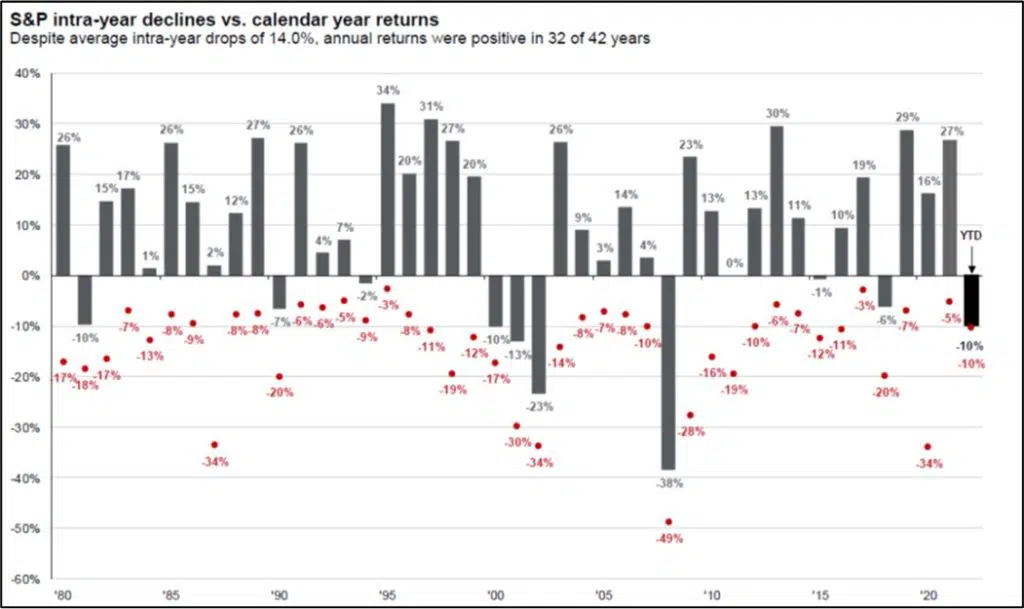The stock market has been very volatile in the first two months of the year. Uncertainty surrounding inflation and interest rates affected stocks earlier in the year. Recently, the Russian incursion into Ukraine has spooked the markets. As I write this note, the S&P 500 (A representative of US stocks) is down 13% for the year, to levels last seen in the summer of 2021
There is nothing new about stock market volatility. As seen below, in the last 42 years the S&P 500 has dropped every year at some point, by an average of 14% intra year (The red spots, each drop for a different reason) but has still ended the year positive in 32 of those 42 years. Over that period, the annualized rate of the return was 12%. The best way to think about volatility is that it is the price paid for long term returns. If anything, the current drop in the market has made stocks cheaper and closer to it’s 25-year average valuation. (Based on forward Price Earnings multiples). Further, volatility surrounding geopolitical events have been short lived in the recent past.

Following geopolitical events is a fascinating pastime. However, investing based on global macro events has a very poor track record (For example, the HFRI Macro index has the worst performance of all the strategies covered: https://www.hfr.com/family-indices/hfri# ). More specifically, taking the example of the last significant drop in the S&P 500, in February 2020 as Covid-19 was spreading, stocks were down about 8%. If you had sold at that point waiting for things to improve you would have saved yourself the vicious volatility of stocks over the next few weeks but would have lost out on the 25% return in stocks through November when the first Covid vaccine was announced.
A reliable way to invest is to construct diversified portfolios based on individual tolerance for risk so that it gives you the confidence to work through volatility in the market. Diversification takes out the need to have to second guess which investment would be affected by individual events and allows you to stay invested over the long term. Long term success and performance comes from ‘Time in the market, and not timing the market’.
As you know your portfolios are well diversified across industries, size and geographies. Changes are made occasionally – for example an overweight to growth stocks (that had crept in in some accounts because of performance) was reduced last year and interest rate risk in bonds (For those accounts with bonds) was reduced by increasing investments in short-term bonds.
Please reach out to me if you have any questions or would like to discuss anything.
Best,
Deva Panambur, CFA®, CFP®
